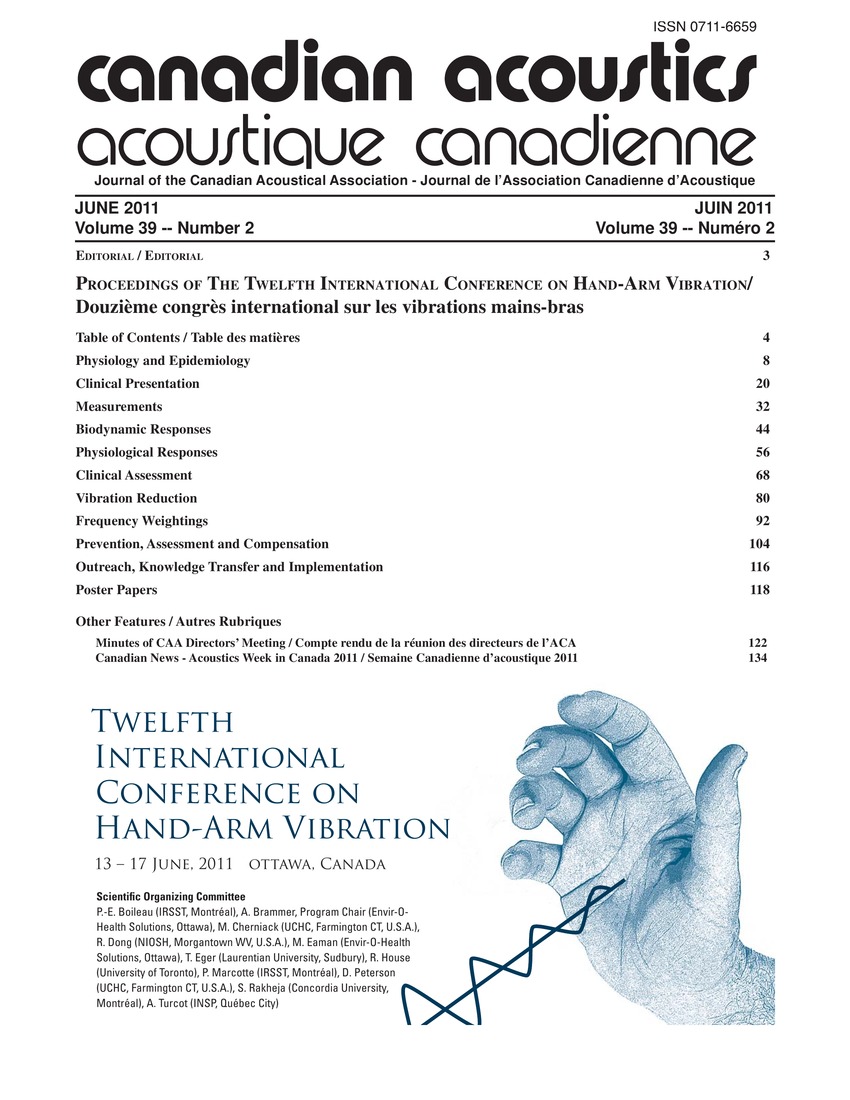Factors influencing the hand-arm mechanical impedance
Keywords:
Design of experiments, Different frequency, Driving point mechanical impedances, Experimental campaign, Factorial design, Finite-elements method, Frequency ranges, Linear model, Mechanical impedances, Vibration levelAbstract
An experimental campaign was described with the aim to evaluate of the factors affecting the driving point mechanical impedance (DPMI) at different frequencies, using the ANOVA technique. The factorial design of experiments (DOE) was used to identify how the posture of elbow, shoulder, and wrist angles, the grip and the push forces and the vibration level affect the DPMI at different frequencies. An aluminum alloy handle was designed with finite elements methods so as to have a natural frequency above 300 Hz. The resonant frequency decrease due to the hand mass led to a systematic error not compensated by the handle idle mass subtraction. The apparent mass uncertainty in the frequency range 10 Hz-1 kHz is lower than 5% for masses ranging from 10 to 80 g. The effect of the vibration level is found to be limited and this leads to the conclusion that the adoption of a linear model is adequate.Additional Files
Published
How to Cite
Issue
Section
License
Author Licensing Addendum
This Licensing Addendum ("Addendum") is entered into between the undersigned Author(s) and Canadian Acoustics journal published by the Canadian Acoustical Association (hereinafter referred to as the "Publisher"). The Author(s) and the Publisher agree as follows:
-
Retained Rights: The Author(s) retain(s) the following rights:
- The right to reproduce, distribute, and publicly display the Work on the Author's personal website or the website of the Author's institution.
- The right to use the Work in the Author's teaching activities and presentations.
- The right to include the Work in a compilation for the Author's personal use, not for sale.
-
Grant of License: The Author(s) grant(s) to the Publisher a worldwide exclusive license to publish, reproduce, distribute, and display the Work in Canadian Acoustics and any other formats and media deemed appropriate by the Publisher.
-
Attribution: The Publisher agrees to include proper attribution to the Author(s) in all publications and reproductions of the Work.
-
No Conflict: This Addendum is intended to be in harmony with, and not in conflict with, the terms and conditions of the original agreement entered into between the Author(s) and the Publisher.
-
Copyright Clause: Copyright on articles is held by the Author(s). The corresponding Author has the right to grant on behalf of all Authors and does grant on behalf of all Authors, a worldwide exclusive license to the Publisher and its licensees in perpetuity, in all forms, formats, and media (whether known now or created in the future), including but not limited to the rights to publish, reproduce, distribute, display, store, translate, create adaptations, reprints, include within collections, and create summaries, extracts, and/or abstracts of the Contribution.


